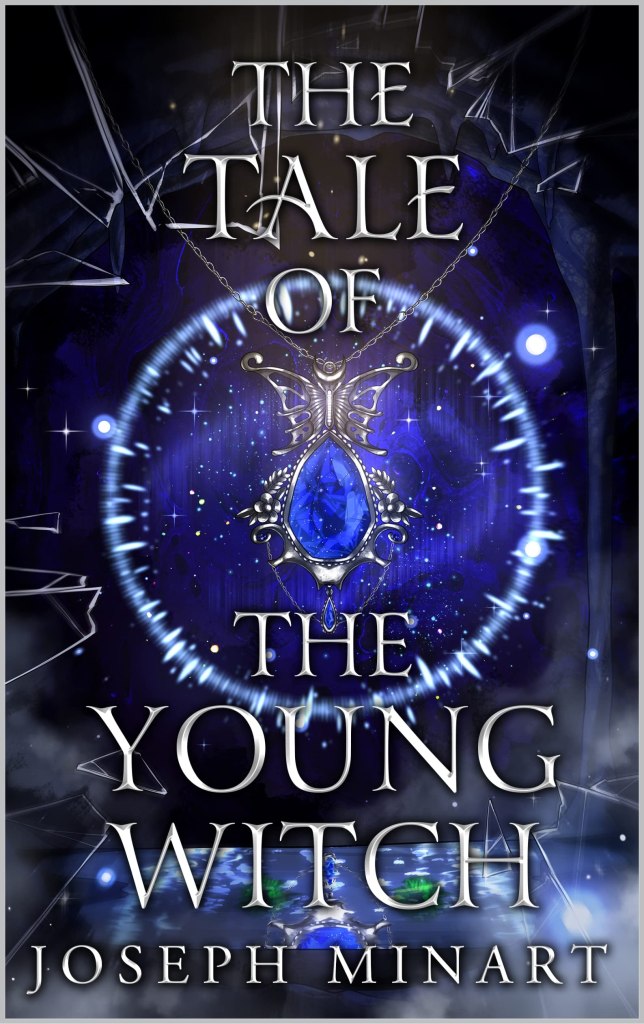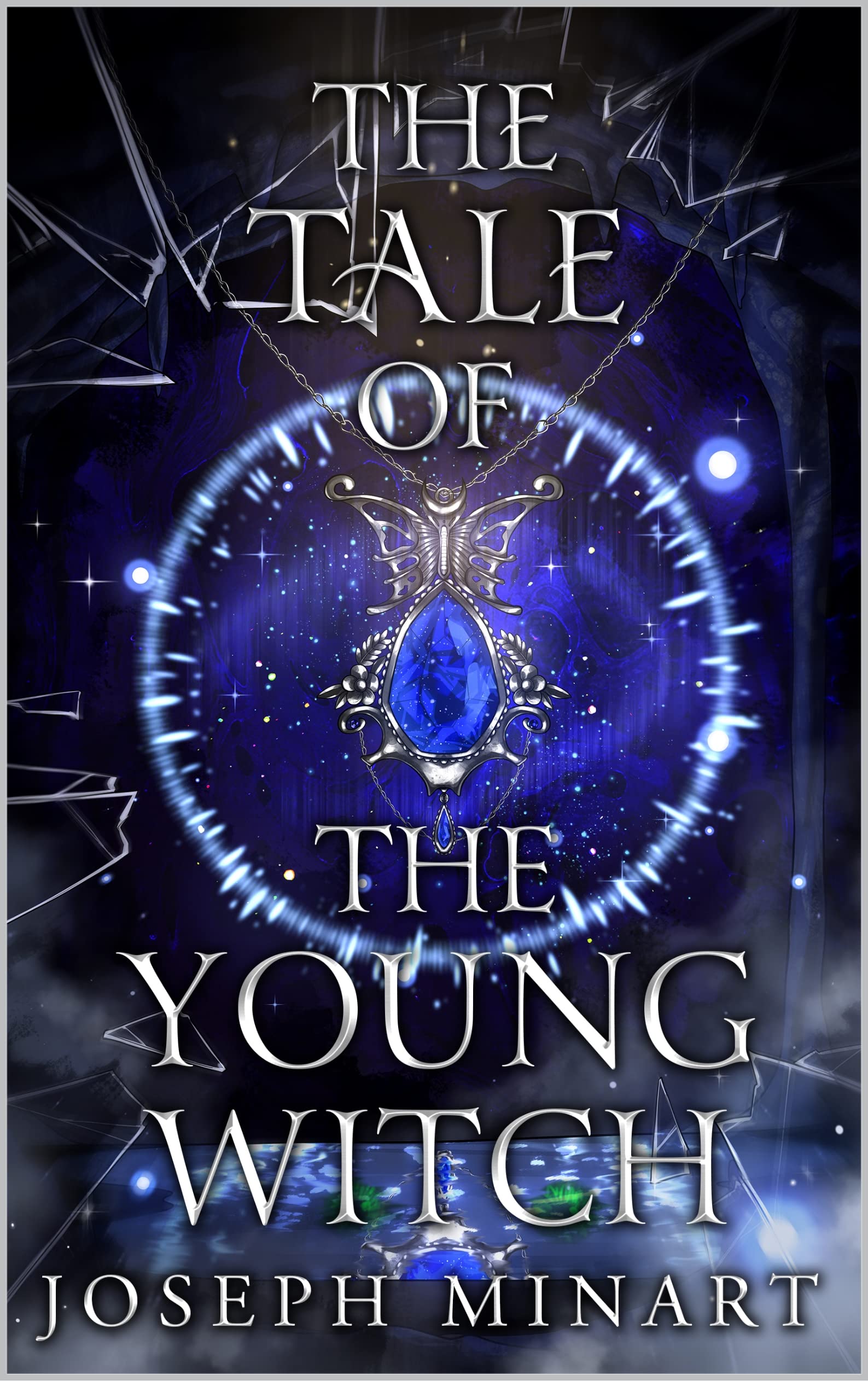

Written by Joseph Minart
Many book titles don’t tell the reader what to expect. While the title may touch upon the themes, they often don’t get to the crux of what the story is about. The Tale of the Young Witch, by Joseph Minart, is not one of those books. If this book is just one thing, it is certainly a tale of a young witch. From this title, the reader can infer it’s a fantasy book, and one likely aimed at younger readers. The reader can also infer that it may strike a fairytale-esque tone, which is where much of the book’s charm lies.
Upon beginning The Tale of the Young Witch, I was taken by this charm. From the outset, Minart presents a story for both the young and the young at heart. Set within the Kingdom of Daimitria, the novel quickly introduces readers to its teenage protagonist, Amelia Twigg—a delightful name that is timeless with some modernity, and unassuming with a sense of mystery. Amelia soon learns her belief that witchcraft is extinct was misplaced. Upon discovering that she, herself, is a witch, she is targeted by a mysterious cabal and villain. And so this epic high fantasy begins.
Throughout The Tale of the Young Witch, the author writes in an engaging and accessible style. It makes for easy reading for the adult readers, and accessible for the book’s younger audience. But while I was grabbed by the fairytale qualities of the book’s prose in its early chapters, the style doesn’t continue through the remainder of the book. Minart credits a number of editors who guided him through polishing the book, and I wonder if this has resulted in inconsistent edits, with different editors having their approaches to their edits. Whether it’s the editors, or the author losing the narrative voice as the book continued, it results in a book that doesn’t read as well in some parts as others.
At 667 pages in paperback (or “just” 537 pages in hardcover, or an estimated 669 pages on Kindle), The Tale of the Young Witch is a long book. Given the genre—a blend of epic and high fantasy—the book’s length isn’t uncommon. While I appreciate a long text, this book feels too long for the story being told. It’s a far-reaching story, with a wide and diverse cast of characters, much like many high and epic fantasies before it (and after, I’m certain). While it starts off with a fast pace, this speed slows as the book reaches its second act, where it stalls. The book repeats itself at points, describing the same things multiple times. In doing so, it loses momentum and risks losing the reader’s attention. Much like the changing style of the book’s prose, the use of multiple editors—responsible for individual chapters, or in some instances, parts of chapters—has done the book a disservice. In looking at segments of the book in isolation instead of at it in its entirety, its editors haven’t identified the areas where some fat should have been trimmed.
While I have described this book as one aimed at younger readers and its story being for both the young and the young at heart, I find myself at a loss as to who, exactly, the target audience is. While over a hundred pages shorter than Harry Potter and the Deathly Hallows, it’s still a long book for younger audiences. By comparison, Harry’s first outing in The Philosopher’s Stone, is just over half this book’s length. Asking younger readers not already addicted to the book’s world is a big ask. For the most part, The Tale of the Young Witch tells a story suitable for middle grade readers, however there are some heavier moments in the book that might be more appropriate for the young adult audience.
The above comparisons to Harry Potter don’t only relate to the book’s length, but the style the story’s presented in. It’s a coming of age tale about a young magic user learning to come to terms with themselves and their abilities, with much of the same thematic resonance. Naturally, given The Tale of the Young Witch’s genre, the setting is completely different. While it’s never a given that an epic high fantasy will have a strong setting, the Kingdom of Daimitria comes through in spades. From the map at the beginning of the book, it is evident that Minart has created a large fantasy world, but in reading the book, it is mind-boggingly epic in its scope. Daimitria is filled with various fantastical and mythological creatures, with many interesting twists on the reader’s expectations. Its magic system is wonderful, topped off by some great steampunk trappings that not only add to the book’s aesthetics but also add further depth. The world building is wonderful, and while the novel stands on its own, it is ripe for further stories, whether they’re sequels, or simply other adventures set within the kingdom.
If you follow these reviews, you may recall I’m a sucker for supplementary material. The book’s back matter includes an index with information about its characters, locations, history, the magic system, songs, books and more. Not only does it serve as a reference guide for readers diving into its deep world, it makes for entertaining reading that enriches the overall experience.
The Tale of the Young Witch would have been best served by a single editor, who could have helped streamline the book and maintained a single narrative voice. Yet it casts an engaging coming of age tale about a young witch that opens up into a fantastical story of epic proportions, offering a view into a richly deep world.
Favourite Passage
Amelia Twigg woke up startled. She sighed with self-pity. Oh, it was just another bad dream, she thought to herself, but it honestly felt so real this time. The same nightmare always ended with her drowning, struggling to breathe while unwieldy shades of darkness surrounded her. A natural inkling of fear lingered within her: the fear of losing control of everything she held dear. She also feared what her life had become. The old, familiar days of comfort were all but forgotten, and her old life could never return as it once was. This sudden realization depressed her. She lay motionless upon the roughest mattress imaginable while her green eyes stared upward, her hair spread out upon the pillow, looking forlorn toward the tent’s ceiling.
The Tale of the Young Witch, Part II, Chapter 2
The Tale of the Young Witch was provided by the author for the purpose of an honest review.
The Tale of the Young Witch is available in paperback from retailers, including—but not limited to—Amazon; and hardcover and Kindle, exclusive to Amazon.
Note: I do not post scores for reviews on this website, but do post them on my Amazon and Goodreads reviews:
- Amazon
- Goodreads
You can follow Joseph Minart online, via:

Interested in purchasing The Tale of the Young Witch?
Please find a link below; please note I do not collect any proceeds from the sale.
The Tale of the Young Witch

